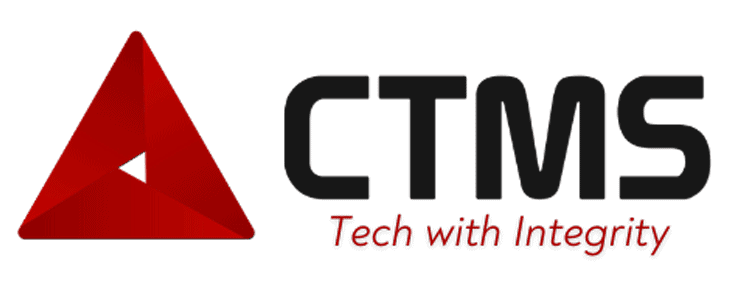Your Guide to Creating an IT Strategic Plan
Your business can’t succeed without a defined, overarching strategy—and neither can your IT department. Despite this, many business owners plan and manage IT on an improvised basis, loosely following a set of abstract ideas but never formally defining what their goals are or how they plan to achieve them.
If you want to save money, improve tech efficiency, and ultimately set your business up for long-term success, you need to set strategic goals for your IT. But what exactly do we mean by this? And what steps can you take to accomplish it?
What Is an IT Strategic Plan?
An IT strategic plan is a set of goals and directives that apply to your IT infrastructure and IT department. What technologies does your business need to succeed, how are you going to implement and maintain them, and how can you accomplish all of your technology goals as efficiently as possible?
There are many components to this equation, and the final output is going to look different for different organizations. You can start by conducting a SWOT analysis, examining the strengths, weaknesses, opportunities, and threats associated with your business in terms of its core technologies. You’ll also need to think about your short-term and long-term general business goals, your current access to resources, and how your business will evolve over time.
Together with your partners, you can put together an IT strategic plan that includes the following:
- Core technologies, products, and services. What are the core elements of your IT infrastructure? What technologies, products, and services does your business need to operate, and which additions could make your business run more efficiently? What are you going to need in the future?
- Processes and management. What processes are you going to follow and how are you going to manage your infrastructure? Do you have a plan for ongoing maintenance? Remote monitoring for cybersecurity risk mitigation? Updates and new installations?
- Cost effectiveness. How are you going to manage all of your IT needs as cost effectively as possible? If you had unlimited money to spend, there’s no IT problem that couldn’t be solved. But unfortunately, most companies operate on a tight budget. How do you make things work and keep your company profitable?
Looking to create a robust IT strategy? With the help of CTMS, strategizing has never been easier.
IT Infrastructure Strategic Goals: Characteristics of Effective Goals
With a general IT strategic plan in place, you can start setting IT infrastructure strategic goals. Goals are important because they provide direction and motivation while giving you a measuring stick for success.
You’ll need both short-term and long-term goals to be effective in this space. For example, as a short-term goal, you may need some functional infrastructure for your employees to do their jobs as productively as possible. As a long-term goal, you may want that infrastructure to be flexible and scalable, so you can aggressively grow the business when you’re ready to do so.
SMART criteria are still the gold standard when it comes to setting goals. All of your IT infrastructure strategic goals should have the following qualities:
- Specific. Your goals need to be specific, or else you won’t have solid direction to work with. For example, it’s a bad idea to set a goal like acquiring lots of good technology. We have no idea what number is associated with “lots,” and we don’t know what makes “good” technology good. We don’t even know what technologies we’re talking about. Define all of your terms and use hard numbers for best results. Remember, this is how you’re measuring success, so you need to be able to objectively determine whether you’ve met this goal.
- Measurable. Similarly, your goal needs to be measurable. At the end of the goal period, you’ll evaluate your progress to see if you’ve met your objectives. If you have no real way to track this progress or if your goal is open to interpretation, the goal is not effective enough.
- Achievable. It’s a good idea to set goals that are challenging but achievable. For example, fleshing out a robust cybersecurity strategy for your corporation isn’t going to happen in the span of a day. Work with IT professionals who have ample experience so you can set realistic expectations.
- Relevant. Your IT infrastructure strategic goals also need to be relevant to your IT infrastructure and your high-level IT strategic plan. In other words, how does this individual goal play into your broader strategy? Is it helping you achieve your core business objectives?
- Time-bound. Finally, you need to make sure your goals are appropriately time-bound. You may have a goal of fully migrating to the cloud, but when do you need to finalize that transition? This helps you avoid procrastination and motivates you to achieve better overall results within the IT department.
Common IT Strategy Issues
In the course of setting superior IT strategic goals, you may run into the following common issues:
- Lack of clarity or direction. Are your partners or team members confused about your overall direction or how your individual goals play into your overarching business objectives?
- Lack of cohesion. All of your IT strategic goals should work together for a common purpose. It should be clear how each goal factors into the broader equation.
- Lack of documentation. It’s great that you’ve openly talked about better cybersecurity measures, for example, but without documentation those discussions remain ethereal.
- Lack of measurability. If you can’t confidently say whether you’ve hit a goal or not, the goal is not effective.
- Inaction or apathy. Goals function as a motivational tool in most contexts, but they don’t work universally or automatically. Inaction and apathy can compromise your IT strategic plans.
- Failure to follow up. You need someone in charge who can follow up to evaluate progress, reframe expectations, and keep your projects moving forward.
Your Top Choice for IT Strategic Planning
If you want to improve your IT strategic planning, you need an IT partner who can help you contextualize your goals and plan an appropriate course of action. At CTMS, that’s our specialty. Contact us to see how we can help your business achieve all of its strategic IT department goals!
Related Postings
 https://www.ctmsit.com/wp-content/uploads/2025/06/IT-Business-Solutions.png
725
1300
Dan Stark
https://www.ctmsit.com/wp-content/uploads/2022/07/CTMS-tagline-black.png
Dan Stark2025-06-26 12:05:082025-06-26 12:07:35IT Business Solutions: The 2025 S...
https://www.ctmsit.com/wp-content/uploads/2025/06/IT-Business-Solutions.png
725
1300
Dan Stark
https://www.ctmsit.com/wp-content/uploads/2022/07/CTMS-tagline-black.png
Dan Stark2025-06-26 12:05:082025-06-26 12:07:35IT Business Solutions: The 2025 S...
Business IT Solutions vs Managed ...
CYBER SOLUTIONS, CLOUD SERVICES, Cybersecurity, IT SOLUTIONS, IT Support
About Us
Computer Technology Management Services (CTMS) supports organizations nationwide with high-quality, customizable business IT tools and cybersecurity strategies for dealerships and more.
